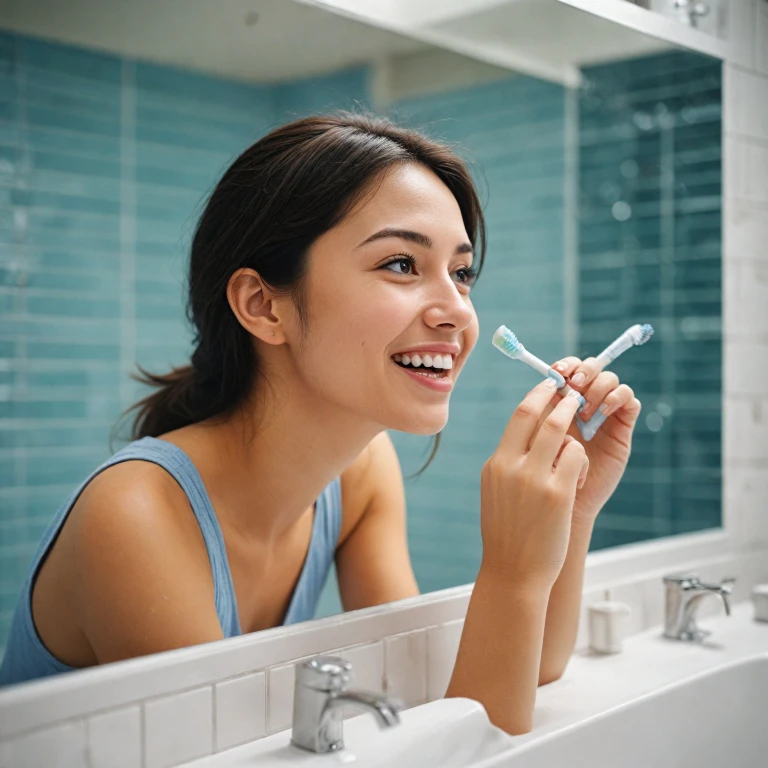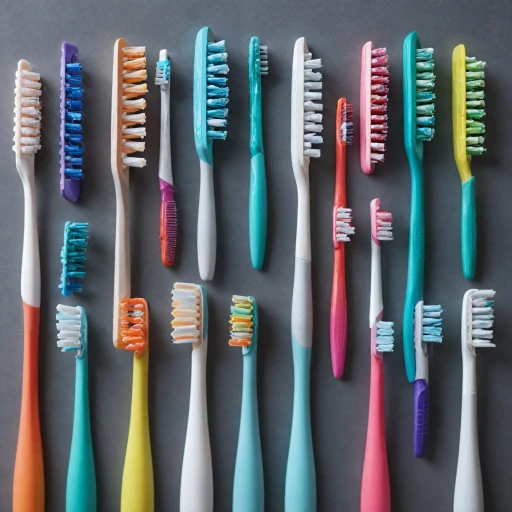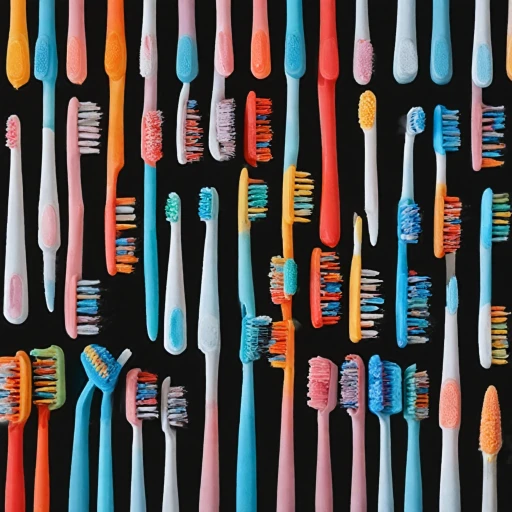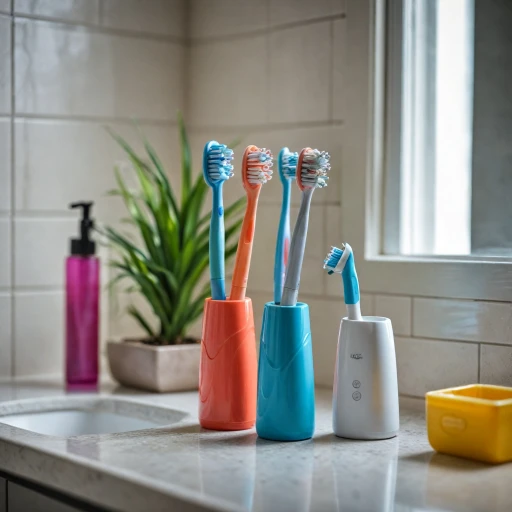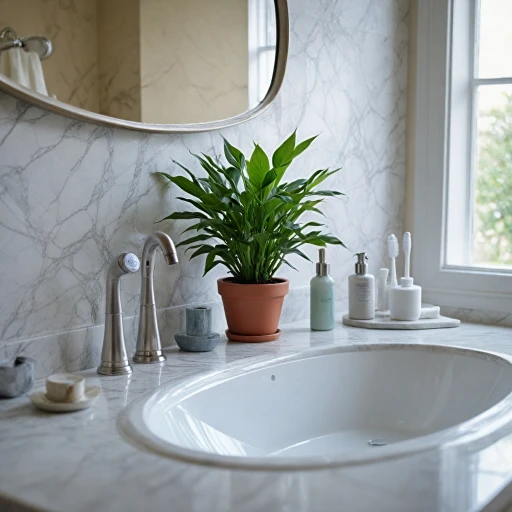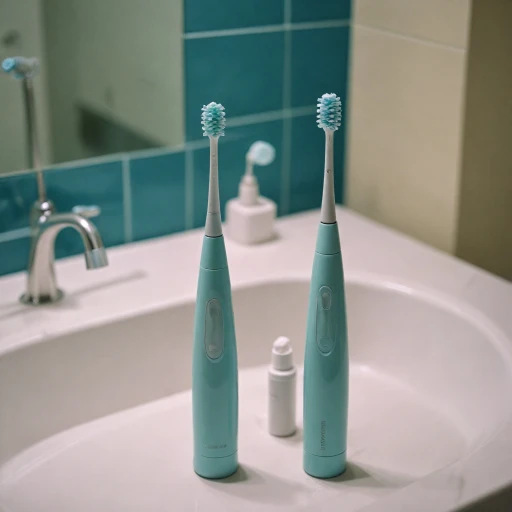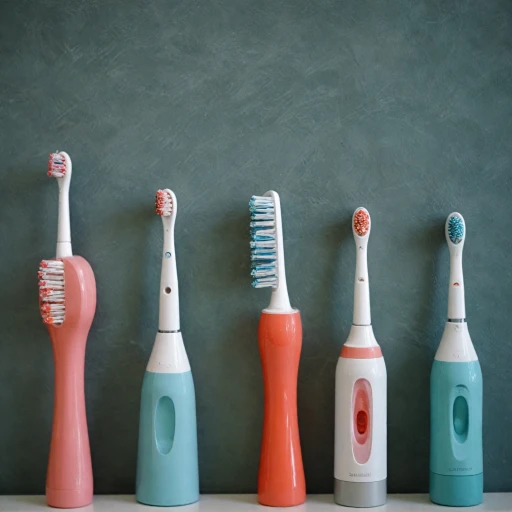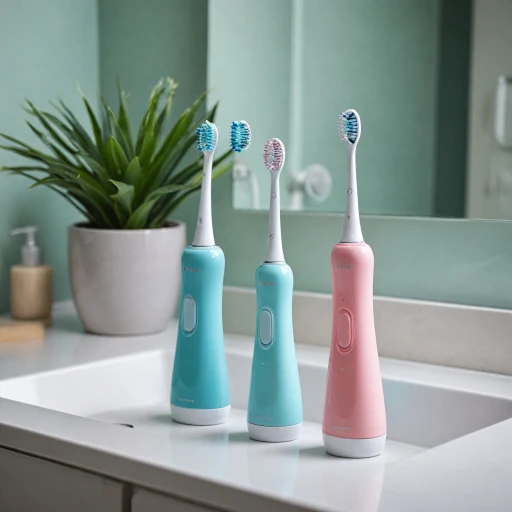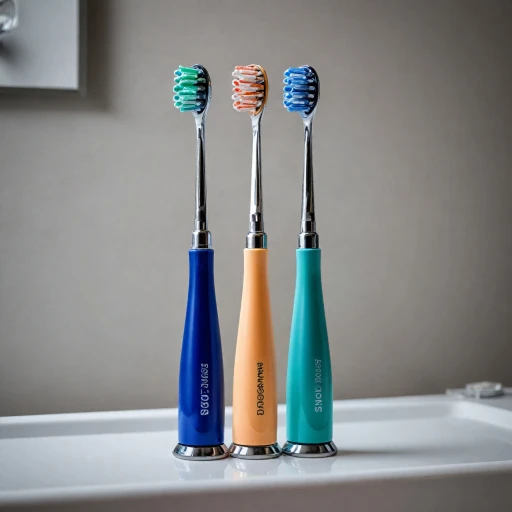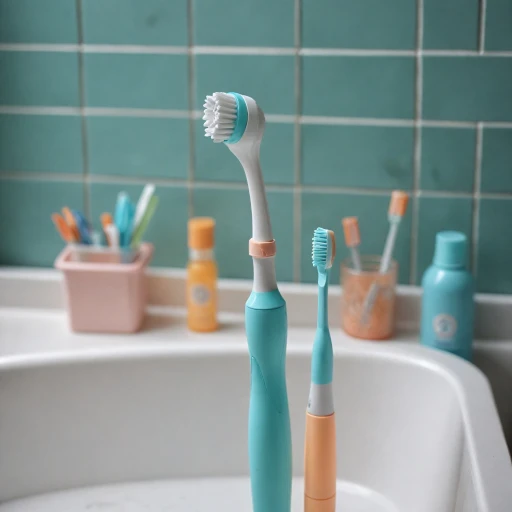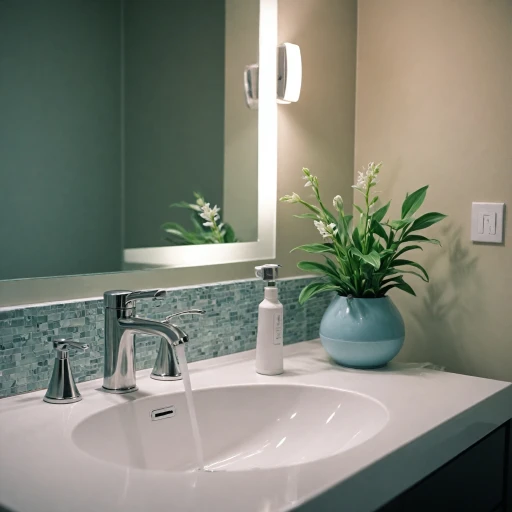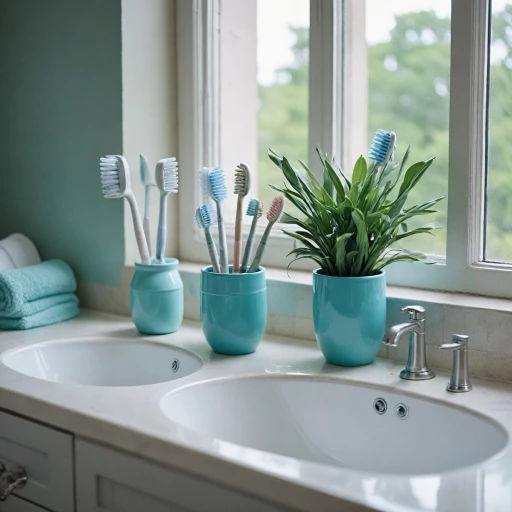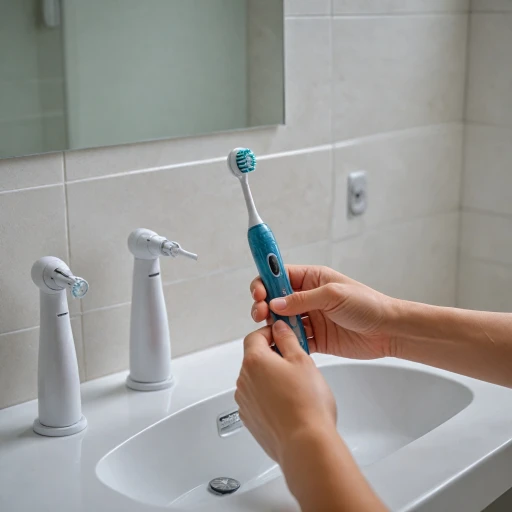
Understanding Your Electric Toothbrush
Getting to Know Your Electric Toothbrush
Understanding your electric toothbrush is crucial for optimizing your oral care routine and maintaining excellent dental health. With the variety of electric toothbrushes available in stores, knowing the key features can assist you in making the right choice to suit your specific needs. The electric toothbrush offers a significant upgrade from traditional manual toothbrushes. It effectively cleans teeth and gums with less physical effort, making it an appealing option for many individuals. The power-driven brush head helps in removing plaque more efficiently from the surfaces of teeth compared to a manual toothbrush, which requires you to do all the work yourself. It's important to note several features common in many electric toothbrush models:- Brush Heads: These can vary in shape and size, but the most important factor is the bristles. Softer bristles are generally recommended by dental associations as they are gentler on gums and effective in plaque removal.
- Timer and Pressure Sensors: Many electric toothbrushes are equipped with a timer and a pressure sensor, vital features that help ensure you brush for the recommended two minutes and do not press too hard on your teeth and gums.
- Rechargeable Batteries: Most electric toothbrushes come with rechargeable batteries, making them environmentally friendly and cost-effective in the long run.
- Oral Health Technology: Various models offer advanced technology features designed to enhance your brushing experience and optimize gum health.
Preparing for a Brushing Session
Setting the Stage for a Successful Brushing Routine
Proper preparation is key when it comes to brushing your teeth with an electric toothbrush. Attention to detail in these preliminary steps can greatly enhance your overall oral health and ensure that your gum and dental care is optimized.
Firstly, ensure that your electric toothbrush is fully charged or has sufficient battery life if it's a rechargeable electric model. This allows for consistent power output during your brushing session, essential for effective cleaning of plaque and maintaining your oral health.
Next, choose the appropriate brush head for your needs. The bristles of electric toothbrushes come in different styles and designs, each suited to different dental requirements. For instance, some brush heads are designed for sensitive gums, while others focus on intensive cleaning of the surfaces teeth. Make sure the brush head is securely attached before use.
Additionally, apply a pea-sized amount of toothpaste to the brush head. Opt for a fluoride-rich formula as recommended by the dental association for optimal oral health support and teeth protection.
It's also helpful to prepare your mouth by rinsing it quickly with water before beginning to brush. This helps to loosen any loose particles and primes your gum and teeth for cleaning.
For those seeking to enhance their routine, considering upgrading to specialized brush heads can make a significant difference. Explore options like the Oral-B Floss Action Heads, which offer advanced technology for improved cleanliness.
Proper Brushing Techniques
Optimizing Electric Toothbrush Techniques for Effective Brushing
When it comes to cleaning your teeth with an electric toothbrush, employing the right techniques is crucial. The method you use can vastly improve your oral care routine, helping to remove more plaque and keep your mouth healthier. Here’s how to get the most out of your tooth brushing sessions:
- Position Properly: Hold the brush head at a 45-degree angle to your teeth and gums. This angle maximizes contact with the tooth surfaces and gently stimulates the gums. Avoid pressing too hard; let the bristles do the work.
- Move Slowly and Gently: Unlike manual brushing, you don’t need to scrub your teeth. Hold the toothbrush in place for a few seconds on each tooth, allowing the electric motion to clean effectively.
- Use the Right Amount of Pressure: Overaggressive brushing can damage gums and enamel. Many electric toothbrushes come with a pressure sensor to help you apply just the right touch.
- Cover All Surfaces: Ensure you reach all areas of your mouth, including the outer, inner, and chewing surfaces of your teeth. Don’t forget the gum line, as plaque frequently builds up there.
- Pay Attention to Your Gums: Gently brush your gums where they meet your teeth—this is key for maintaining gum health and preventing gingivitis.
By refining your techniques, you are not only ensuring better oral health but also enhancing your overall dental care routine. For people with unique considerations, such as sensitive teeth, certain https://www.electric-toothbrush-guru.com/blog/finding-the-most-gentle-electric-toothbrush-for-sensitive-teeth types of electric toothbrushes are specifically designed to offer a gentler approach.
Timing and Frequency
Time Guidelines for Optimal Brushing
To maximize the effectiveness of your electric toothbrush, timing is crucial. Research consistently underscores the importance of brushing your teeth for at least two minutes. This duration ensures that all surfaces of your teeth receive proper attention, enhancing your oral health by efficiently removing plaque.Frequency for Consistent Oral Care
Brushing teeth at least twice a day is recommended by dental professionals to maintain optimal oral health. Using an electric toothbrush can help achieve a more thorough clean compared to manual toothbrushes, thanks to their oscillating or vibrating brush heads designed to reach every nook and cranny of your mouth.Structured Brushing Sessions
Divide your mouth into quadrants and allocate 30 seconds to each section. This methodical approach ensures that you clean each tooth surface equally and give your gums the gentle care they need, reducing the risk of gum disease. Consider starting with one quadrant, brushing all outer surfaces, then moving to inner surfaces and lastly, the chewing surfaces.Mind the Pressure
When brushing with an electric toothbrush, it's important to apply gentle pressure to avoid irritations or damage to your gums. Most electric toothbrushes these days come with sensors to alert you if too much pressure is being applied. Listening to these cues can play a crucial role in preserving both your tooth enamel and the health of your gums.Personalizing Your Routine
Everyone's brushing routine may vary slightly depending on their oral care needs. Some individuals, especially those with dental concerns, might benefit from additional brushing sessions. However, over-brushing can be detrimental, leading to enamel wear. It's all about finding the right balance for your teeth and gums. By adapting these timing and frequency guidelines to your oral care routine, you are embracing a meticulous approach to dental hygiene that elevates your oral health. For more comprehensive understanding, explore insights from reputable sources and maintain regular dental check-ups to ensure you're meeting your individual needs.Common Mistakes to Avoid
Avoiding Common Pitfalls in Electric Toothbrush Use
When it comes to using an electric toothbrush, many people unknowingly make mistakes that can compromise their oral health. Here are some common errors to watch out for:
- Pressing Too Hard: Unlike manual toothbrushes, electric toothbrushes do the work for you. Pressing too hard can damage your gums and tooth enamel. Let the bristles gently glide over your teeth and gums.
- Not Replacing the Brush Head: Over time, bristles wear out and become less effective at cleaning. Make sure to replace your brush head every three months or sooner if the bristles are frayed.
- Skipping Areas: It's easy to miss spots, especially the back teeth and along the gum line. Ensure you cover all surfaces of your teeth, including the inner, outer, and chewing surfaces.
- Using the Wrong Angle: Hold the brush head at a 45-degree angle to your teeth and gums. This helps remove plaque effectively and promotes better oral care.
- Brushing for Too Short a Time: The dental association recommends brushing teeth for at least two minutes. Many electric toothbrushes have built-in timers to help you achieve this.
- Ignoring the Gum Line: Plaque often builds up along the gum line. Pay special attention to this area to maintain healthy gums.
By avoiding these mistakes, you can maximize the benefits of your electric toothbrush and maintain excellent oral health. Remember, proper technique and regular maintenance are key to keeping your teeth and gums in top condition.
Maintaining Your Electric Toothbrush
Keeping Your Electric Toothbrush in Top Shape
To ensure your electric toothbrush performs at its best and contributes positively to your oral health, regular maintenance is key. Unlike manual toothbrushes, electric toothbrushes require a bit more care, but the effort guarantees a clean and effective brushing experience.
Change the Brush Head Regularly
Replacing the brush head is crucial to maintain the efficiency of your electric toothbrush. Overused bristles can lose their cleaning power and may harbor bacteria, compromising your oral hygiene. It's generally recommended to replace your brush heads every three months, or sooner if the bristles become frayed.
Clean the Device Thoroughly
After brushing with an electric toothbrush, it's important to rinse the brush head with water to remove leftover toothpaste and debris. Once a week, detach the head from the handle and clean the connection point to prevent any build-up of toothpaste residue which can affect the performance of the toothbrush.
Check the Handle and Charging Elements
Inspect the toothbrush handle regularly to ensure there is no damage or excessive wear. Keep the charging base clean and free from water or toothpaste to avoid any electrical issues. For rechargeable electric toothbrushes, ensure that you're familiar with the charging cycles to maintain battery life.
Store Properly
Proper storage of your toothbrush is essential to prevent the growth of bacteria. Store the toothbrush in an upright position and let the head air dry between uses. Avoid keeping it in closed containers where moisture can promote bacterial growth.
Follow Manufacturers' Recommendations
Consult the user manual for specific care instructions tailored to your particular model. Manufacturers often provide guidelines to maximize the longevity and hygiene of their product.
By following these maintenance steps, you ensure that your electric toothbrush continues to deliver optimal cleaning performance, helping you maintain healthy teeth and gums effectively. Regular upkeep is not only good for your toothbrush but also plays a key role in preserving your overall oral health.
